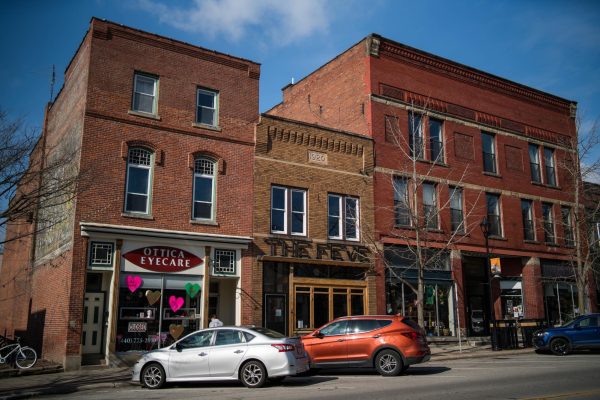Public School Funding Back on the Ballot
This Election Day, Oberlin voters will decide whether or not to renew two separate tax levies which fund the Oberlin public schools. The levies — Issues 21 and 22 on the ballot — are both property taxes and would last for five years before going back on the ballot.
“Prior to this election, the issues have gone before the public, and when those issues were voted on previously, they were passed.” said Melissa Linebrink, Oberlin City Schools marketing and communications consultant. “With the renewal, it just means that we’re going to the public again, just to ask them for their continued support. We’re not asking for new money, it’s going to be the same amount that they had been paying tax-wise before.”
Issue 21 funds day-to-day operating expenses such as staff salaries, workbooks, art supplies, musical instruments, and other extracurricular activities. Issue 22 funds permanent improvements, such as upgrading and maintaining buildings and buses. Revenue from Issues 21 and 22 will not go toward the ongoing construction of the new pre-K-12 building, as funding for the project has already been secured through a 2018 levy.
Even though Oberlin City Schools moved online this year due to the pandemic, educational offerings and expenses have not decreased, according to Linebrink.
“Now a lot of extracurriculars are still being held despite COVID; they’re just meeting via Zoom so that if school is to resume, they will already have a basis for those clubs,” Linebrink said. “It’s the same for the special program support such as the translators that we have, hearing-impaired support, the gifted program, physical therapists; even though we’re e-learning, everybody is still working and all of this is still being utilized.”
The district’s efforts to provide food and technological resources for all students has introduced new costs.
“This year, PPE is an added expense,” said Oberlin City Schools Treasurer Robert Rinehart. “We’re also providing hotspots and internet to about 70 to 80 families. We’ve also handed out over 700 Chromebooks, laptops, and desktop units to families.”
Recently, state funding for Oberlin’s schools has been on the decline, with around $200,000 total cut in the past two years.
Issue 21 is a 3.77-mill renewal levy, meaning that it would cost $115.46 each year for the owner of a $100,000 home. Issue 22 is a 2.0-mill renewal levy, but the district intends to only collect on half of that, meaning it would cost $13.45 for anyone with a home worth $100,000. The two taxes together could raise up to $7 million for the district.
“The biggest part is that it’s no new money, and we are here to make sure that we’re spending that money properly,” Rinehart said.
While College students who are registered in Ohio can vote on Issues 21 and 22, some community members feel that they should not. Because the College is a nonprofit, its roughly $200 million in property is tax-exempt, and students who live in on-campus housing thereby don’t contribute any property taxes.
“In general, I’m not in favor of students voting for property tax local issues,” said City Council Member Kristin Peterson, who noted that when she was an Oberlin student she voted absentee to her home state, and did not start voting in Ohio until after she graduated. “47 percent of the property in Oberlin is tax-exempt. That includes churches and schools and things, but it also includes a lot of College property. My general feeling is that students shouldn’t be voting on things that will affect the regular residents of the community, but not necessarily affect them personally or institutionally.”
Others feel differently. Bryan Burgess, community member and former City Council president, says that students should vote on issues that they feel educated about.
“There is never discussion on whether Kendal residents should vote and their tax liabilities are roughly the same as OC Students,” Burgess wrote in an email to the Review. “Some students pay property taxes through their off-campus rent, some students pay wage taxes on a part-time job, and all students benefit from living in a city with quality public services and good public schools. I would never discourage anyone from voting but rather, I encourage people to be informed and vote their conscience. … And if there’s something on the ballot that you are unsure of then it would probably be [better] to skip over that issue than to make an uninformed choice.”
Linebrink is optimistic that voters have noticed how much work and care the schools have put into providing for students and families during this unprecedented time.
“We’re just hoping that the residents of Oberlin have seen where their money is going and they know that right now we’re doing everything that we can to support them through this new form of learning,” she said. “The Oberlin community is so small, but I also know that we wouldn’t have our community if we didn’t have the College. I think if we continue to support each other, that is a win-win for everybody.”
Issues 21 and 22 are on the ballot this election. Early voting has started, and Oberlin voters can vote at the Lorain County Board of Elections building at 1985 North Ridge Road East, Lorain, OH. Election Day is Nov. 3






